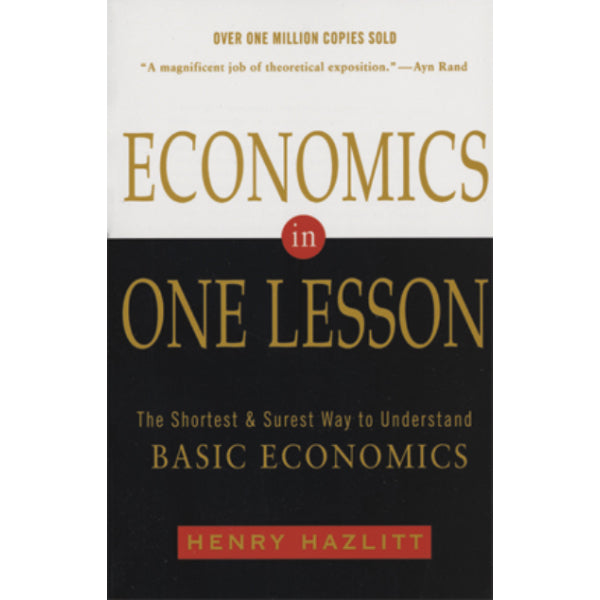Economics in One Lesson: The Shortest and Surest Way to Understand Economics by Henry Hazlitt
Economics in One Lesson: The Shortest and Surest Way to Understand Economics by Henry Hazlitt
Couldn't load pickup availability
“Ce qu’on voit et ce qu’on ne voit pas” — what is seen and what is not seen — was Frederic Bastiat’s classic warning. Henry Hazlitt took that insight, sharpened it for a twentieth-century audience, and created Economics in One Lesson, a work that remains the clearest antidote to economic fallacies.
The central error Hazlitt dissects is government’s habit of praising the visible effects of intervention while ignoring the unseen costs: the jobs not created, the goods not produced, the growth stifled. From tariffs and subsidies to minimum wage laws and inflation, he shows how each scheme rewards one group while quietly draining the wealth of all. He borrows the rigor of Ludwig von Mises and the plain exposition of Philip Wicksteed to prove that prosperity comes only from free production and voluntary exchange.
Hazlitt’s chapters read like dispatches against fashionable orthodoxy. “Public Works Mean Taxes” unmasks the illusion that government can conjure wealth. “Do Unions Really Raise Wages?” dismantles a cornerstone of labor dogma. “The Mirage of Inflation” explains why printing money cannot create prosperity. Each lesson is drawn not from abstract theory but from the logic of cause and effect — clear enough for the layman, rigorous enough to withstand any economist’s test.
First released in 1946, Economics in One Lesson remains startlingly current. Nearly every policy debate today — from trade wars to minimum wage hikes — replays the very fallacies Hazlitt exposed. Readers who take his “one lesson” to heart will never be fooled by short-term promises or political sleight of hand again. (1979 ed, 218pp, pb)

